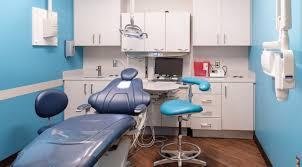For many children, visiting the dentist can be a stressful experience, especially if they need more than a routine check-up. In cases where children have anxiety, special needs, or require extensive dental procedures, sedation dentistry can be an excellent solution to ensure their comfort and safety.
As a parent, it’s essential to understand how sedation works, its benefits, and the options available for your child. This guide will walk you through what you need to know about sedation dentistry for kids, helping you make informed decisions for your child’s dental care.
1. What is Sedation Dentistry?
Sedation dentistry involves using medication to help children relax during dental procedures. It’s particularly useful for kids who experience dental anxiety, have difficulty sitting still, or need multiple treatments done in a single visit.
Sedation can range from mild (helping a child feel calm) to deep sedation (where they are nearly asleep but can still be awakened). The goal is to make the dental experience as smooth and stress-free as possible for both the child and the dentist.
2. Types of Sedation Used in Pediatric Dentistry
There are several types of sedation used in pediatric dentistry, depending on the child’s needs and the procedure being performed. Here are the most common options:
- Nitrous Oxide (Laughing Gas):
Nitrous oxide is the mildest form of sedation and is commonly used for children. The gas is inhaled through a mask, helping the child relax while remaining awake. It’s considered very safe and wears off quickly once the procedure is finished.
When to use: Ideal for routine procedures or minor dental work. - Oral Sedation:
With oral sedation, the dentist will give the child a liquid or pill medication that makes them feel drowsy but still conscious. Oral sedation is often used for children who have moderate anxiety or need longer procedures.
When to use: Suitable for moderately anxious kids or longer treatments like fillings or crowns. - IV Sedation:
Intravenous (IV) sedation is administered through a vein, and it allows for deeper sedation while the child remains responsive to instructions. The dentist closely monitors the child’s vitals throughout the procedure.
When to use: Recommended for extensive dental work or children with severe dental anxiety. - General Anesthesia:
In some cases, general anesthesia may be necessary for children who cannot tolerate dental procedures due to extreme fear, special needs, or a large amount of work that needs to be done at once. General anesthesia puts the child completely to sleep during the procedure.
When to use: Typically reserved for major dental procedures or children with severe special needs.
Internal Link Example: Learn more about how nitrous oxide is used in pediatric dentistry here.
3. Benefits of Sedation Dentistry for Children
Sedation dentistry offers several advantages for children, especially those who may be fearful or anxious about dental visits:
- Reduced anxiety and fear: Sedation helps ease a child’s anxiety, making them feel more comfortable and relaxed during the procedure.
- Cooperation: Children who have trouble sitting still for long periods can be more cooperative under sedation, allowing the dentist to complete the procedure more efficiently.
- Pain management: In addition to helping children relax, sedation can reduce pain and discomfort during dental treatments.
- Fewer appointments: With sedation, dentists may be able to complete multiple treatments in a single visit, reducing the number of appointments needed.
These benefits make sedation dentistry a valuable option for children with dental anxiety or those who need extensive dental care.
4. Is Sedation Dentistry Safe for Kids?
Safety is a top priority when it comes to sedation dentistry for children. Pediatric dentists are specially trained to administer sedation safely and monitor the child’s vital signs throughout the procedure. Before recommending sedation, the dentist will evaluate your child’s health, medical history, and specific needs to determine the best sedation option.
Here are some important safety measures:
- Pre-sedation instructions: Your dentist will provide instructions on preparing your child for sedation, such as limiting food and drink before the procedure.
- Monitoring during the procedure: The dentist will monitor your child’s heart rate, breathing, and oxygen levels to ensure they are responding well to the sedation.
- Post-sedation care: After the procedure, your child will be monitored until the sedation wears off. Most children recover quickly from lighter forms of sedation, while deeper sedation may require a longer recovery period.
Internal Link Example: Read about what to expect during sedation and recovery here.
5. What Parents Should Expect Before and After the Procedure
As a parent, it’s essential to be well-prepared when your child is undergoing sedation dentistry. Here’s what you can expect before, during, and after the procedure:
Before the Procedure:
- The dentist will provide detailed instructions regarding food and drink restrictions before sedation. In most cases, children should not eat or drink for several hours before the procedure to prevent complications.
- You’ll need to discuss any medications or health conditions your child has to ensure safe sedation.
During the Procedure:
- Depending on the type of sedation used, you may be able to stay in the room with your child. However, for more extensive sedation like IV sedation or general anesthesia, it’s common for parents to wait in the waiting area.
- The dentist will closely monitor your child’s vital signs and adjust the sedation if necessary to keep them comfortable.
After the Procedure:
- Your child may feel groggy or sleepy after sedation, so it’s essential to plan for extra rest at home.
- The dentist will give you post-procedure instructions, including any precautions to take or signs to watch for, such as prolonged drowsiness or nausea.
- Most children recover quickly from sedation, but you should monitor your child and provide plenty of fluids and soft foods.
6. When is Sedation Dentistry Recommended?
Sedation dentistry is typically recommended for children who:
- Have severe dental anxiety or fear of dental procedures
- Need extensive dental work, such as multiple fillings, crowns, or extractions
- Have a hard time sitting still for extended periods
- Have special needs that make traditional dental care challenging
If your child fits into one of these categories, sedation dentistry could be a helpful option to ensure a positive dental experience.
Conclusion
Sedation dentistry can be a safe and effective way to help children feel more comfortable during dental visits. Whether your child has dental anxiety, special needs, or requires extensive treatment, understanding your sedation options can give you peace of mind as a parent. By working with your Charlotte Pediatric Dentistry, you can ensure that your child receives the care they need while minimizing stress and discomfort.



More Stories
Multivitamins for Women’s Stress Relief
The best specialty Billing Services Texas
Enhance Dental Care for Precision and Safety